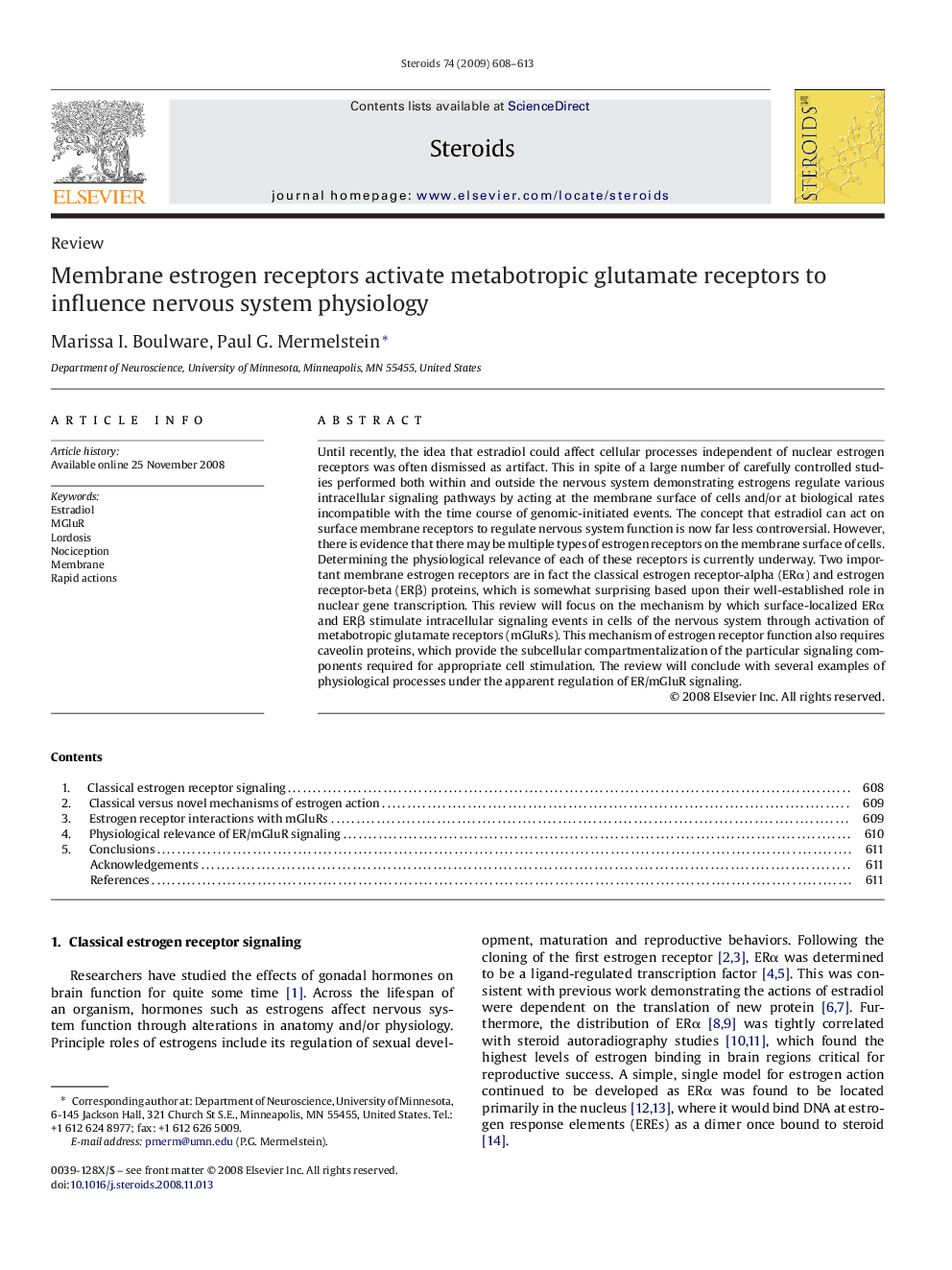| Article ID | Journal | Published Year | Pages | File Type |
|---|---|---|---|---|
| 2028825 | Steroids | 2009 | 6 Pages |
Abstract
Until recently, the idea that estradiol could affect cellular processes independent of nuclear estrogen receptors was often dismissed as artifact. This in spite of a large number of carefully controlled studies performed both within and outside the nervous system demonstrating estrogens regulate various intracellular signaling pathways by acting at the membrane surface of cells and/or at biological rates incompatible with the time course of genomic-initiated events. The concept that estradiol can act on surface membrane receptors to regulate nervous system function is now far less controversial. However, there is evidence that there may be multiple types of estrogen receptors on the membrane surface of cells. Determining the physiological relevance of each of these receptors is currently underway. Two important membrane estrogen receptors are in fact the classical estrogen receptor-alpha (ERα) and estrogen receptor-beta (ERβ) proteins, which is somewhat surprising based upon their well-established role in nuclear gene transcription. This review will focus on the mechanism by which surface-localized ERα and ERβ stimulate intracellular signaling events in cells of the nervous system through activation of metabotropic glutamate receptors (mGluRs). This mechanism of estrogen receptor function also requires caveolin proteins, which provide the subcellular compartmentalization of the particular signaling components required for appropriate cell stimulation. The review will conclude with several examples of physiological processes under the apparent regulation of ER/mGluR signaling.
Related Topics
Life Sciences
Biochemistry, Genetics and Molecular Biology
Biochemistry
Authors
Marissa I. Boulware, Paul G. Mermelstein,
